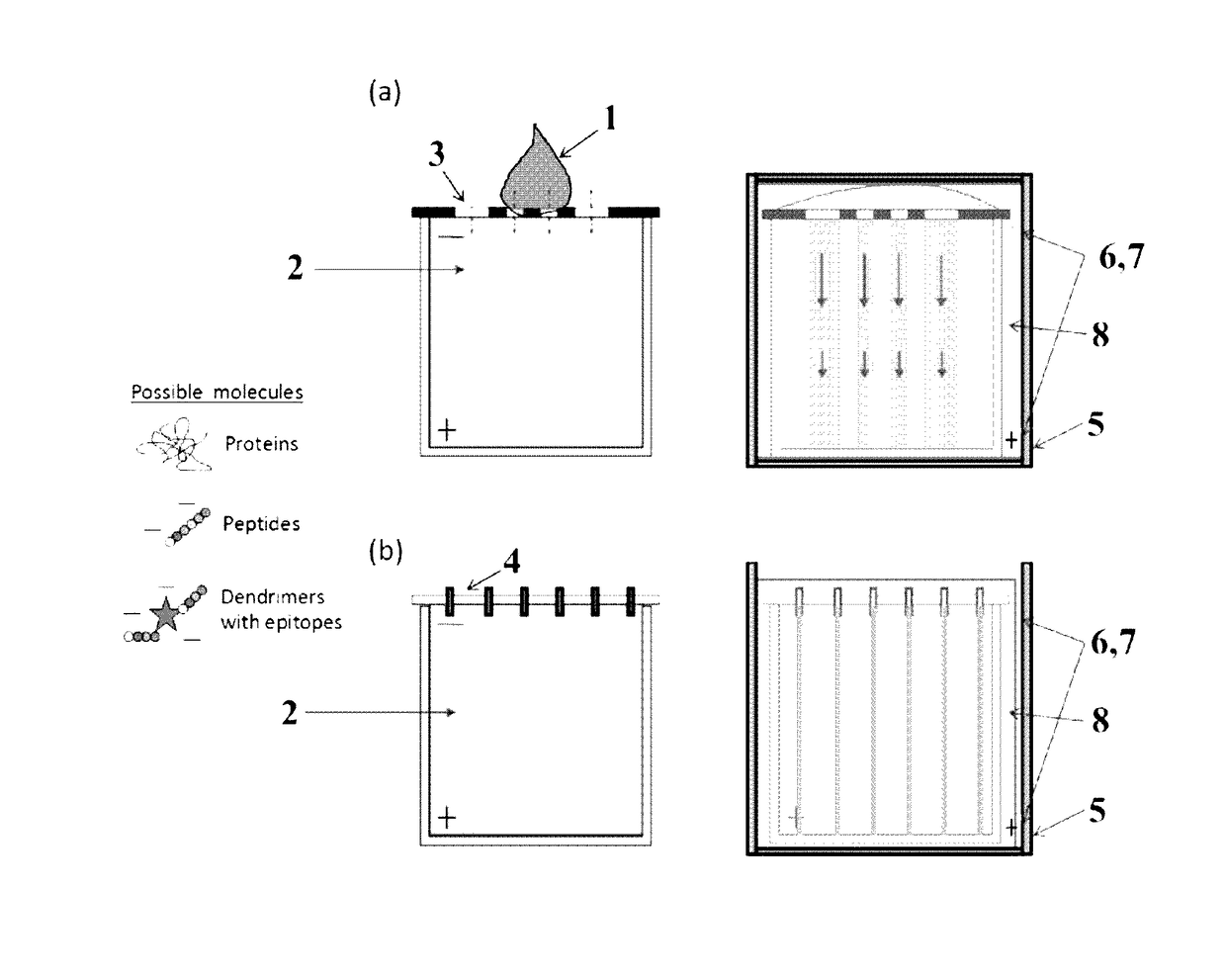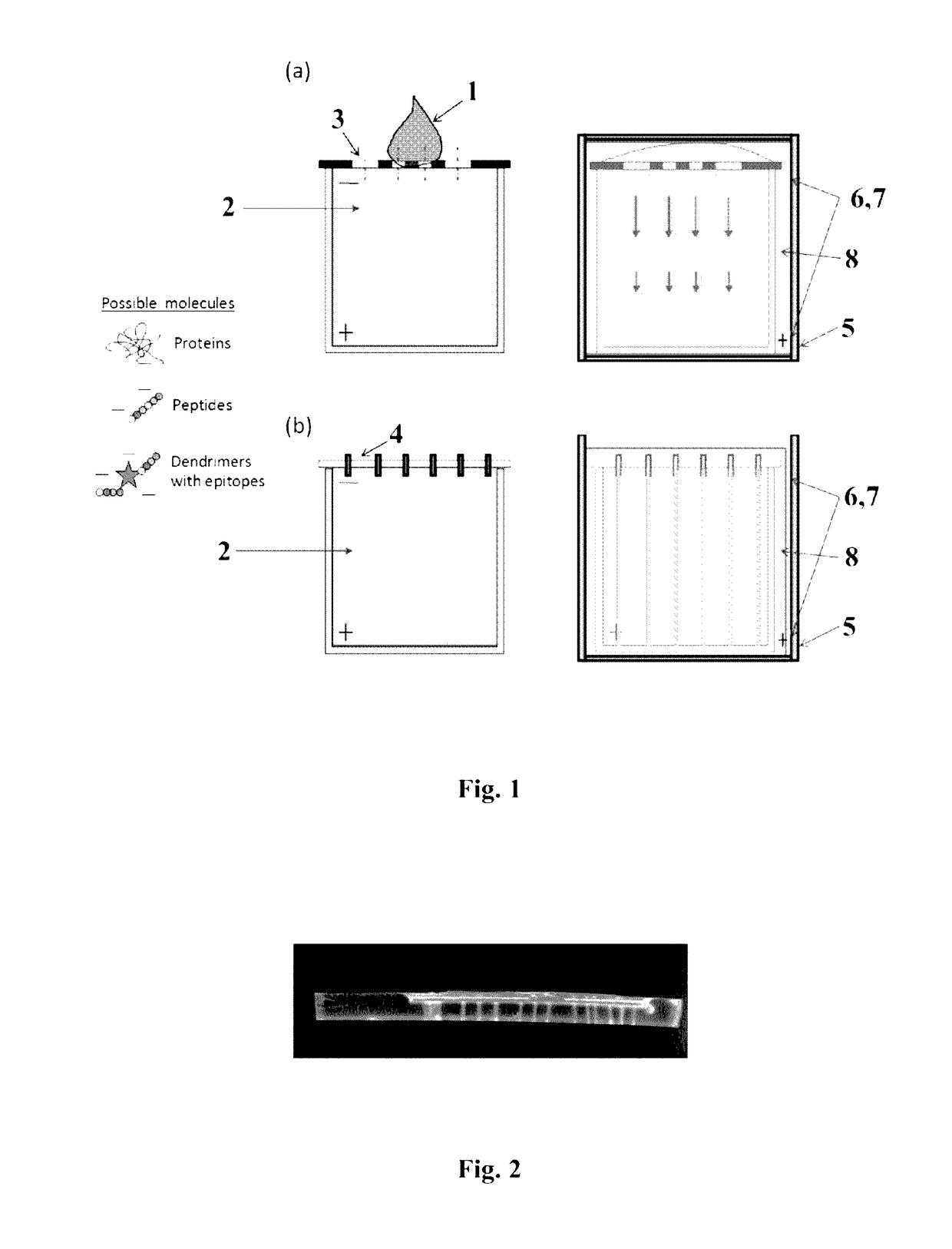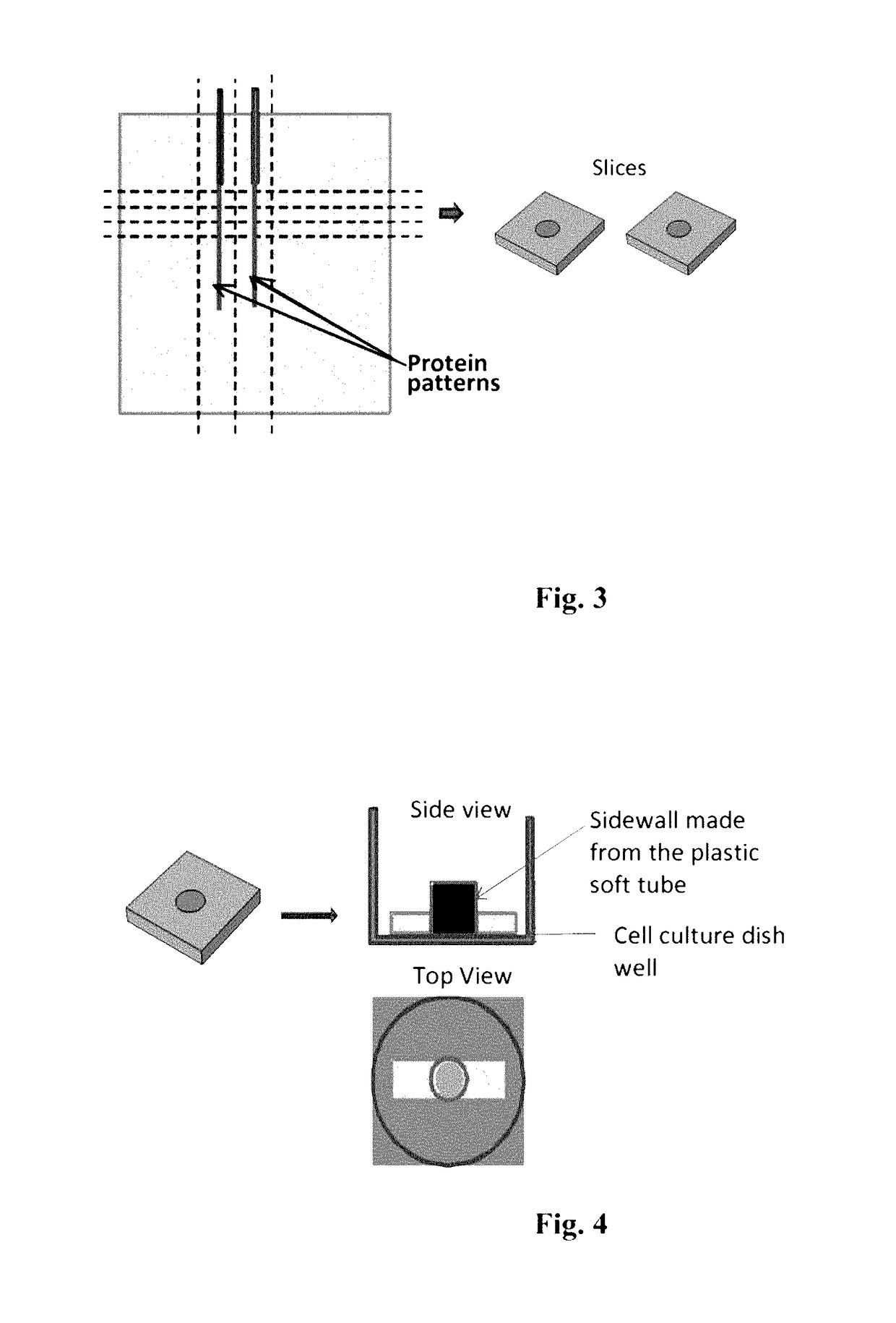Method for manufacturing a three-dimensional biomimetic scaffold and uses thereof
a biomimetic and scaffold technology, applied in the field of tissue engineering and regenerative medicine, can solve the problems of introducing a potential dichotomy between the need for sophistication and ease of production, and none of these techniques uses an electric field to move the molecules, 3d hydrogel,
- Summary
- Abstract
- Description
- Claims
- Application Information
AI Technical Summary
Benefits of technology
Problems solved by technology
Method used
Image
Examples
examples
[0188]The following examples describe the production of 3D biomimetic scaffolds based on the application of an electrical field to a polymerized hydrogel material to pattern different molecules.
1. Materials and Methods
1.1 Parts of the Method of the Invention
[0189]By using an electrical field, the method of the invention is able to move and position bioactive molecules (such as peptides, proteins, dendrimers, etc.) within a three-dimensional (3D) space to create reproducible well organized patterns within hydrogel materials. This technique comprises four key parts as schematically depicted in the particular embodiment shown in FIGS. 1A and 1B:[0190]Electrophoresis: This part is composed of the electrodes (6) and (7), a buffer (8) and the chamber (5) which contains the phases mobile (1) and immobile (2).[0191]Immobile phase (2): This part is the hydrogel that is going to be patterned with the molecules.[0192]Mobile phase (1): This part refers to the molecules that are going to pattern...
PUM
| Property | Measurement | Unit |
|---|---|---|
| size | aaaaa | aaaaa |
| size | aaaaa | aaaaa |
| weight percent | aaaaa | aaaaa |
Abstract
Description
Claims
Application Information
 Login to View More
Login to View More - R&D
- Intellectual Property
- Life Sciences
- Materials
- Tech Scout
- Unparalleled Data Quality
- Higher Quality Content
- 60% Fewer Hallucinations
Browse by: Latest US Patents, China's latest patents, Technical Efficacy Thesaurus, Application Domain, Technology Topic, Popular Technical Reports.
© 2025 PatSnap. All rights reserved.Legal|Privacy policy|Modern Slavery Act Transparency Statement|Sitemap|About US| Contact US: help@patsnap.com



